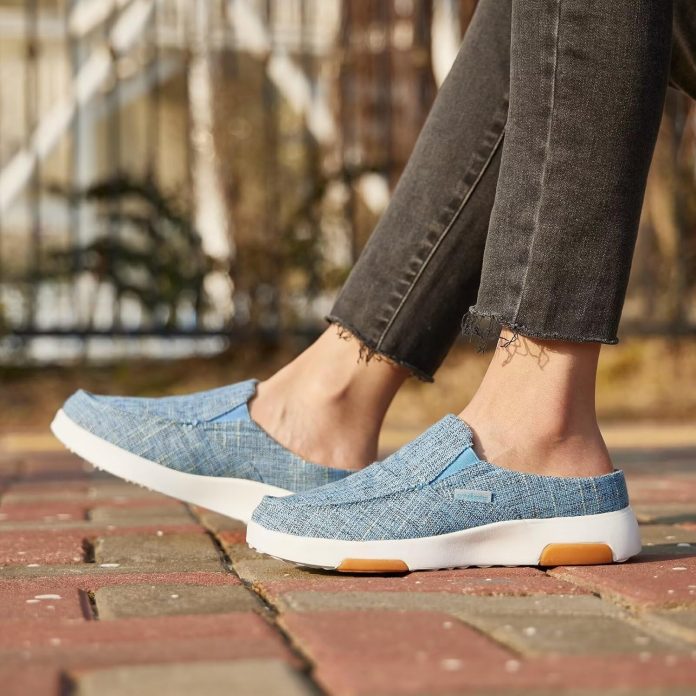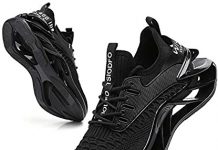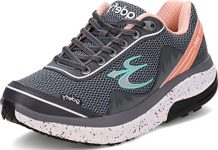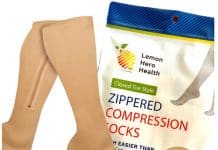As we navigate the world of running shoes, it’s important to understand the impact tariffs can have on prices and availability. Recent tariffs imposed on imported footwear could lead to a notable increase in costs for consumers. We can expect that running shoes might see price hikes of about 30% due to these tariffs, making it crucial for us to plan our purchases wisely.
Many fans of fitness are already taking action. Some are stockpiling shoes before prices rise even further, as reports suggest that major brands may be affected. With the shoe industry already paying significant tariffs, the financial burden is likely to shift to us, the consumers.
Staying informed about these changes not only helps us budget effectively but also guides us in making smarter buying decisions. Understanding the current climate of tariffs is essential for any runner looking to keep their gear up to date without breaking the bank.
Overview of Tariffs
Tariffs have a significant role in the economics of footwear. They shape prices, influence trade relationships, and affect consumers directly. We will explore the historical context of tariffs on footwear, the current structure and rates, and the impact these tariffs have on trade and the economy.
Historical Context of Tariffs on Footwear
Tariffs on footwear date back centuries as countries aimed to protect local industries. Historically, the U.S. imposed tariffs to support its domestic shoe manufacturers against foreign competition. In the 1980s and 1990s, we saw significant tariff reductions, leading to increased imports from countries like China and Vietnam. This shift resulted in lower prices for consumers, making shoes more affordable.
However, as trade policies evolved, we witnessed the rise of tariffs again. Recent trade disputes have led to renewed tariffs aimed at countries with significant shoe production. Understanding this background helps us grasp current pricing trends and market shifts.
Current Tariff Structure and Rates
Today, tariffs on footwear vary significantly. For many imported shoes, the current tariff rates can reach up to 46%, particularly on products from Vietnam. Those from Indonesia face rates around 32%. These high duties contribute to price increases for consumers, as manufacturers often pass on costs.
In addition, changes in U.S. trade policy can further complicate the situation. For example, recent tariffs imposed during trade negotiations have led to predicted price hikes. Some estimates suggest running shoes could see increases of over 30%, which directly affects our shopping decisions.
Impact of Tariffs on Trade and Economy
Tariffs on footwear impact both trade and the economy. By raising prices, these tariffs can reduce consumer spending. This can vary based on the type of footwear purchased. For instance, luxury sneakers may see a more significant drop in sales compared to budget-friendly options.
Additionally, tariffs can harm international relationships. Countries that face higher tariffs may seek alternative markets or retaliate against U.S. goods. This can lead to trade wars, which ultimately affect our economy and the variety of footwear available in stores. Understanding these repercussions helps us navigate the complexities of footwear pricing and trade.
Global Shoe Market Dynamics
The global running shoe market is influenced by a variety of factors, including major brands, production locations, and important trade statistics. Understanding these dynamics helps us grasp the current landscape and challenges within the industry.
Major Running Shoe Brands and Manufacturers
The leading brands in the running shoe market include Nike, Adidas, and Puma. Nike, known for its innovative designs and technology, remains a top player in the industry. Adidas focuses on sustainability, offering products made with recycled materials.
Puma emphasizes style and performance, catering to both athletes and casual users. Other notable players include New Balance, Asics, and Saucony. These brands compete not only in product quality but also in marketing strategies and global reach.
Production Hubs for Running Shoes
Production hubs for running shoes are primarily located in Asia. Countries like China, Vietnam, Cambodia, and Indonesia play significant roles in manufacturing.
- China is a traditional leader in footwear production, providing a large workforce and established supply chains.
- Vietnam has gained importance due to its competitive labor costs and trade agreements.
- Cambodia has emerged as a viable alternative for brands seeking diversified production.
- Indonesia is also increasing its production capabilities, focusing on both local consumption and exports.
Running Shoes Import and Export Statistics
The import and export of running shoes showcase the interconnectedness of the global market. In recent years, the U.S. has been a major importer of athletic footwear, with significant volumes coming from China and Vietnam.
According to data, in 2023, the U.S. imported about $16 billion worth of running shoes, with a substantial percentage from Vietnam. Running shoes also account for a significant portion of global trade, indicating rising demand.
Export patterns show that Vietnam’s footwear sector is rapidly growing, taking advantage of tariffs and trade deals. Countries like Cambodia and Indonesia are gaining ground, contributing more to the international supply chain.
This dynamic market requires us to stay informed about trends and changes to adapt effectively.
Tariffs and Their Impact on Pricing
Tariffs on imports significantly affect various aspects of the sneaker market. We see impacts on manufacturing costs, retail prices, and how consumers respond to price changes.
Effects of Tariffs on Manufacturing Costs
Tariffs increase the cost of materials sourced from other countries. When import taxes are imposed, manufacturers face higher prices for components used to make running shoes. For instance, a $100 sneaker could see manufacturers having to raise costs by approximately $40 due to tariffs.
As manufacturers adjust to these increased costs, they often choose to cut back on production or pass these costs onto consumers. This can lead to a shortage of inventory in stores. As a result, companies might rush to stockpile products before prices climb even higher.
Retail Price Adjustments Due to Tariffs
Retailers must adapt to the rising costs imposed by tariffs. As manufacturing expenses increase, we can expect retail prices to rise as well. For example, if a sneaker costs $100 before tariffs, the retail price could jump to $140 or more once tariffs are applied.
Retailers may also implement temporary offers or discounts to attract customers despite increased prices. Still, as inventory diminishes and costs escalate, customers will have fewer options at lower price points. We anticipate that price adjustments will vary widely across brands, depending on their supply chains and pricing strategies.
Consumers’ Price Sensitivity
Consumers react differently to price changes based on perceived value. When faced with higher sneaker prices, we know some may delay purchases or look for alternatives. This sensitivity often leads to decreased demand for certain brands, impacting overall sales.
Retailers may monitor sales trends and adjust their strategies. Some might opt to promote budget-friendly options, while others may focus on high-end models. Understanding consumer behavior is crucial for companies navigating the challenges posed by tariffs and rising prices.
Case Studies: Effects of Tariffs on Specific Brands
We can observe how tariffs impact various running shoe brands and their strategies. This section looks at Nike’s response to tariffs and what other brands like Lululemon and Hoka are doing to adapt.
Nike and the Implications of Tariffs
Nike faces significant challenges due to increased tariffs on imports. For example, with tariffs, a pair of Nike Air Pegasus 41 shoes could see a price jump of about 40%. This increase affects the company’s pricing strategy and profit margins.
Nike may have to pass these costs onto consumers, reducing sales. To counteract this, they could consider shifting production to countries with lower tariffs, such as Vietnam or Indonesia. Analyzing demand trends will be vital, as we know that loyal customers might absorb some of these price hikes, but new customers could be deterred by the increased costs.
Other Brands’ Strategies in Response to Tariffs
Looking at other brands, we see varying tactics to handle the tariff situation. Lululemon and Hoka are also adjusting their approaches.
Lululemon is focusing on enhancing their supply chain efficiencies. They are exploring local manufacturing options to reduce reliance on imports affected by tariffs. This could help maintain competitive prices.
Hoka, known for its high-performance running shoes, is likely adjusting its pricing strategies as well. They may enhance marketing promotions or bundle offers to keep customers engaged despite the price increases.
By observing these strategies, we can gain insights into how the footwear industry adapts to economic pressures like tariffs.
Political Influences on Tariff Policies
Tariff policies in the U.S. are shaped by various political factors. Decisions made by leaders can significantly impact industries, including running shoes. We will explore U.S. international trade policies and recent tariff reforms that affect the footwear market.
US International Trade Policies
The U.S. trade policies influence tariffs on imported goods, including running shoes. Under the Trump administration, tariffs on many products from China increased. This aimed to promote American manufacturing but raised costs for consumers.
Many footwear brands rely on imported materials or finished products. Tariffs can increase prices for running shoes, making them less affordable for consumers. For example, average tariffs on apparel, including shoes, are projected to rise significantly.
Trade relations with China remain a critical factor as well. The ongoing tensions led to uncertainty in pricing and availability of goods. Companies must adapt to these challenges to maintain their market positions.
Tariff Reforms and Discussions
Recently, we have seen discussions around potential reforms to existing tariff policies. As the political landscape evolves, so do views on the impact of tariffs. Some policymakers advocate for reducing tariffs to lower prices for consumers.
Trade groups warn that high tariffs will raise prices on sneakers and other apparel. This could hurt sales for retailers and manufacturers. Increased costs may lead to fewer choices for consumers in the marketplace.
We must closely monitor these discussions. Changes in tariff policies can directly affect the running shoe industry. Keeping informed helps us understand how political decisions influence our buying power in the future.
Strategic Business Responses to Tariffs
As tariffs on running shoes impact costs and pricing, we need to implement strategic responses to maintain our competitiveness. This involves adjusting our supply chain management, pricing strategies, and manufacturing processes.
Adapting Supply Chain Management
To cope with tariffs, we must reevaluate our supply chains. This means analyzing our dependency on regions heavily affected by tariffs, like Vietnam and China.
We can prioritize local sourcing to reduce shipping costs and tariffs. By partnering with domestic suppliers, we enhance our flexibility and responsiveness to market changes.
Additionally, we should consider diversifying our suppliers. This approach reduces risk and helps manage costs better. We may even explore alternative materials that could be sourced more cheaply.
Product Pricing Strategies
Rising costs from tariffs will require us to rethink our product pricing. We cannot simply pass every cost to customers. Instead, we should find a balance that keeps our products attractive while maintaining profit margins.
Implementing a tiered pricing strategy could help. For example, we could offer premium models with higher margins while keeping a lower-cost option available.
Promotions and discounts during peak shopping seasons can also drive sales without dramatically raising prices. This approach allows us to maintain customer loyalty even as costs increase.
Sourcing and Manufacturing Alterations
To adjust to new tariffs, we must consider changes in our sourcing and manufacturing operations. This may involve shifting some production to countries with lower tariffs.
Conducting thorough market research will help us identify cost-effective regions. We might also invest in automation and technology to improve efficiencies.
Additionally, keeping an eye on inventory levels is crucial. We should avoid overstocking, as increased tariffs can lead to higher holding costs. Strategic inventory management will allow us to adapt quickly to market conditions and maintain a healthy cash flow.
By implementing these strategies, we can navigate the challenges posed by tariffs effectively.
Consumer Perspective on Tariffs and Footwear
As we explore the impact of tariffs on footwear, particularly running shoes, it’s important to consider how these changes affect consumers. We will examine surveys that capture consumer sentiment and discuss how purchasing behaviors adapt in response to price increases resulting from tariffs.
Surveys and Consumer Sentiments
Recent surveys reveal that many consumers are concerned about the rising costs of footwear due to tariffs. We see that approximately 70% of respondents have expressed worry about price hikes on running shoes.
A significant number of consumers believe that tariffs are unfair, pushing them to reconsider brands they usually buy. Many feel that the quality might not justify a higher price.
This sentiment can impact sales significantly. Brands may find that average consumers are selective, shifting to lower-priced options or searching for alternatives. Feedback strongly indicates a desire for transparency regarding pricing and product sourcing.
Adaptations in Consumer Purchasing Behavior
As tariffs increase prices on running shoes, we notice several adjustments in consumer habits. Many of us are seeking sales or discounts more aggressively than before.
Shifts in purchasing behavior include:
- Delayed purchases: Waiting for price drops during sales events.
- Brand switching: Exploring different brands that offer similar quality at lower prices.
- Increased research: Consumers are spending more time comparing products online.
These adaptations reflect our attempts to balance quality and affordability when making decisions about footwear. We are more inclined to look for value-oriented options, even if it means switching our preferred brands.
Digital Media and Tariff Discourse
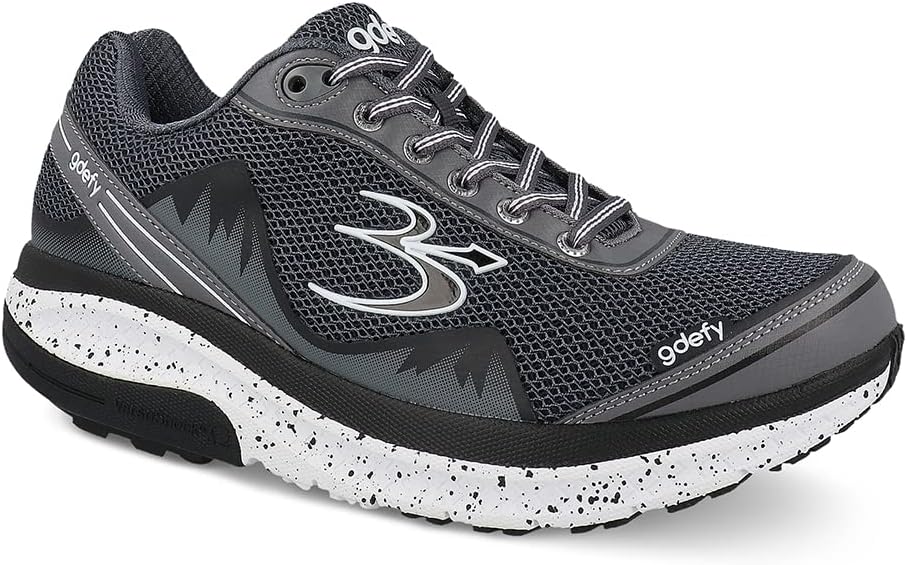
In the digital age, discourse around tariffs on running shoes is vibrant and ongoing. We can see how platforms like Yahoo and social media are shaping public opinion and informing consumers about these changes.
Analysis of Online Discussions and Trends
We observe a significant amount of discussion surrounding tariffs on running shoes on platforms like Yahoo. Many consumers voice concerns over rising prices due to increased tariffs. For instance, running shoe brands that rely heavily on imports may increase their prices to maintain profit margins.
Key themes in these discussions include:
- Price Increases: Many users express worry about how tariffs will affect retail costs for popular brands like Nike and Adidas.
- Brand Responses: Discussions often focus on how companies are adapting to these tariffs, with some brands exploring local manufacturing options.
Social media also amplifies these conversations, allowing for immediate feedback and sentiment sharing. We find that consumers are increasingly seeking out information to make informed buying decisions in light of potential price hikes.
Frequently Asked Questions
Tariffs on running shoes impact pricing and supply chains in significant ways. We will explore how these tariffs change costs, affect variety in the market, and influence production locations for shoe brands.
How do tariffs on imported footwear affect the price of running shoes?
Tariffs increase the cost of imported footwear. For instance, a tariff of about 13% can raise the price of running shoes significantly, making them more expensive for consumers. As companies adjust to cover these costs, we may see a direct price increase at retail stores.
What strategies do companies use to mitigate the impact of shoe tariffs on their supply chain?
Companies often shift production to countries with lower tariffs. They may also seek alternative materials or negotiate better terms with suppliers. These strategies help maintain lower prices for consumers while ensuring profitability despite higher import costs.
Can consumers expect to see a decrease in the variety of running shoes available due to import tariffs?
Yes, we may notice a reduction in the variety of running shoes. As tariffs increase costs, companies may focus on fewer models to save money. This can limit choices for consumers, particularly for niche or specialty shoes.
How do trade policies influence the production locations for running shoe brands?
Trade policies play a critical role in determining where running shoes are made. Brands often choose countries with favorable trade agreements to reduce costs. Changes in tariffs can lead to a shift in production to avoid high import taxes.
What are the implications of tariffs for the sports footwear industry in terms of global competitiveness?
Tariffs can hinder global competitiveness by increasing costs for manufacturers. Companies in countries with high tariffs may struggle to compete with brands in countries without such taxes. This can lead to a shift in market dynamics and influence brand strategies.
How have recent changes in tariff regulations influenced the market for running shoes?
Recent changes have made it more challenging for companies to import running shoes affordably. This has prompted many brands to rethink their pricing strategies and supply chains. The resulting adjustment in market dynamics can affect everything from pricing to product availability.

